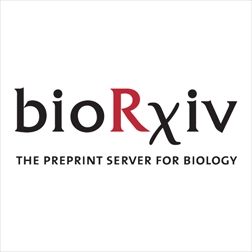George Goodwin
@gg9761.bsky.social
33 followers
62 following
9 posts
Research Fellow, King's College London
Studying the neurobiological mechanisms of arthritis pain
Posts
Media
Videos
Starter Packs
George Goodwin
@gg9761.bsky.social
· Sep 7
George Goodwin
@gg9761.bsky.social
· Sep 5
Reposted by George Goodwin
Dr. Ali Barry
@aliibarry.bsky.social
· Jul 21

NKG2D receptor ligands are cell surface biomarkers for injured murine and human nociceptive sensory neurons
Nociceptors are primary afferent neurons that sense noxious stimuli. They can be activated by tissue injury as well as the accompanying local immune response. We have shown that following nerve injury...
www.biorxiv.org
George Goodwin
@gg9761.bsky.social
· Jul 10
Reposted by George Goodwin
George Goodwin
@gg9761.bsky.social
· Jul 8
Psilocybin has no immediate or persistent analgesic effect in acute and chronic mouse pain models
The psychedelic psilocybin may have lasting therapeutic effects for patients with chronic pain syndromes. Some clinical and preclinical data suggest these putative benefits derive from direct analgesic effects. However, this possibility has not been comprehensively tested in preclinical models. Here, we show that psilocybin is not analgesic over a range of doses across multiple pain assays and models of acute and chronic inflammatory, neuropathic, or musculoskeletal pain in mice. ### Competing Interest Statement B.D.H. is on the scientific advisory boards of Journey Clinical and Osmind, and is a paid consultant to Arcadia Medicine, Inc, Tactogen, LLC, and Vida Ventures, LLC. R.C.M. is now on leave from Stanford, functioning as Chief Scientific Officer at Bayshore Global Management. R.C.M. is on the scientific advisory boards of MapLight Therapeutics, Bright Minds, MindMed, and Aelis Farma. International Anesthesia Research Society, https://ror.org/0252rqe04, Mentored Research Award National Institute on Drug Abuse, T32DA035165, P50DA042012
www.biorxiv.org
Reposted by George Goodwin



